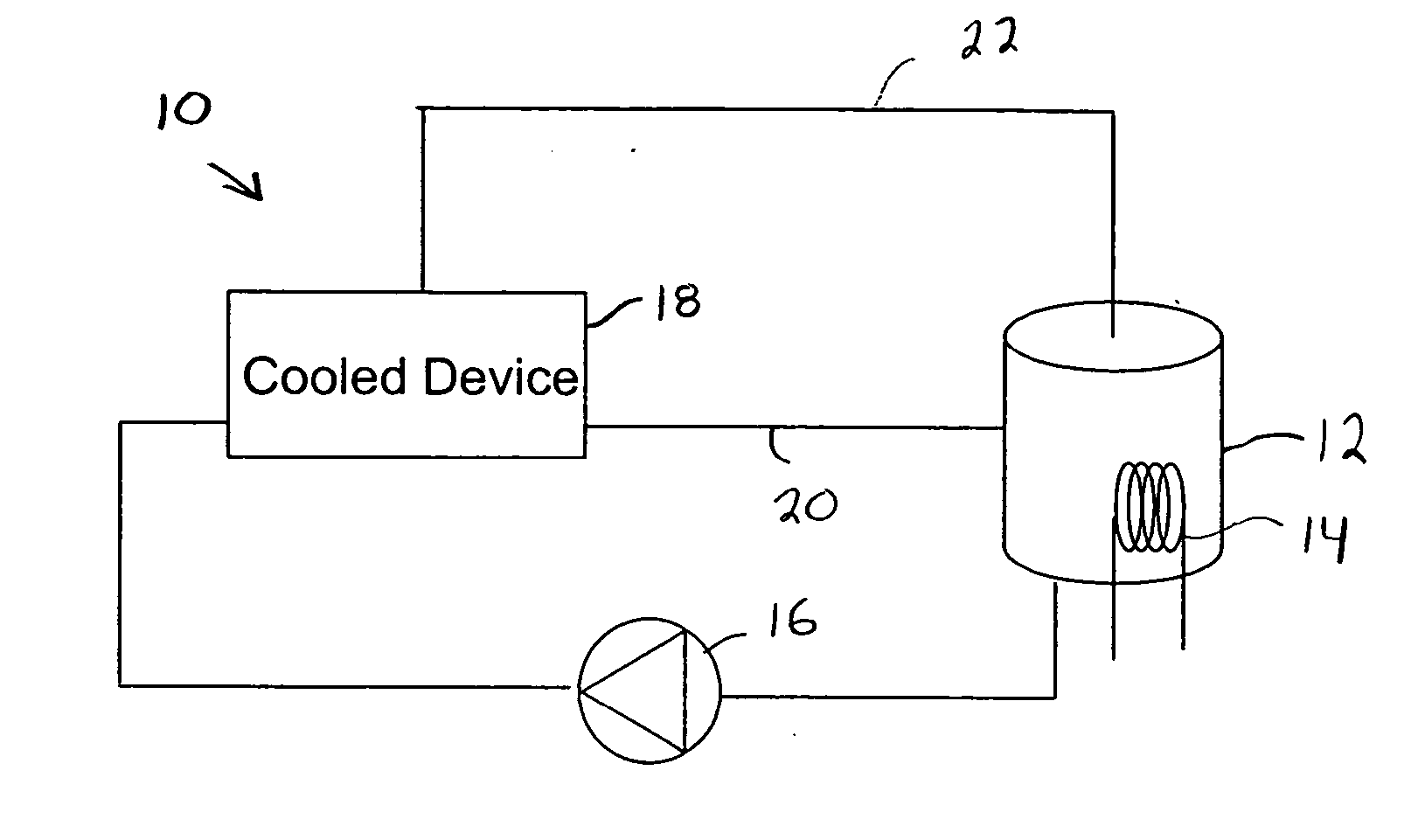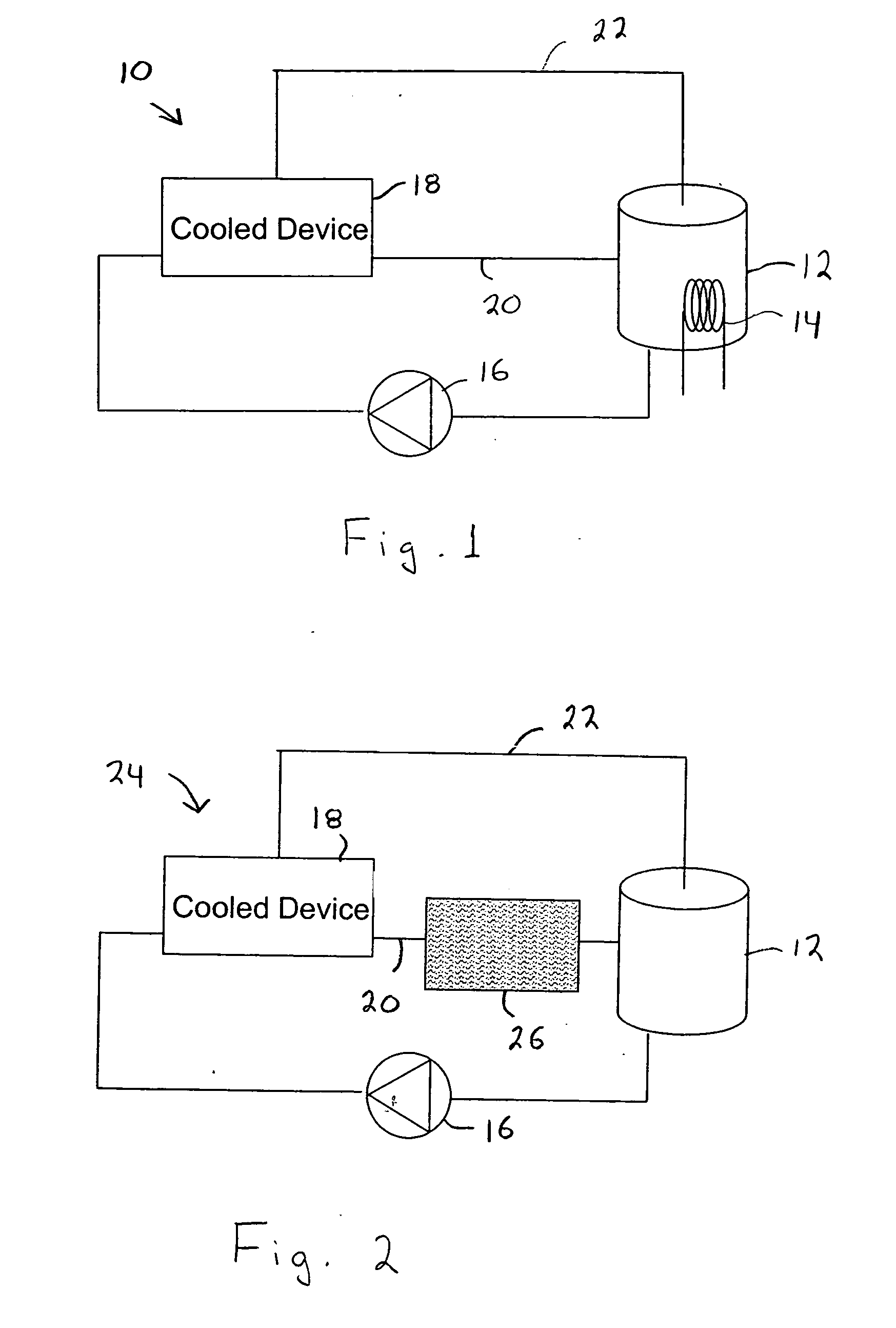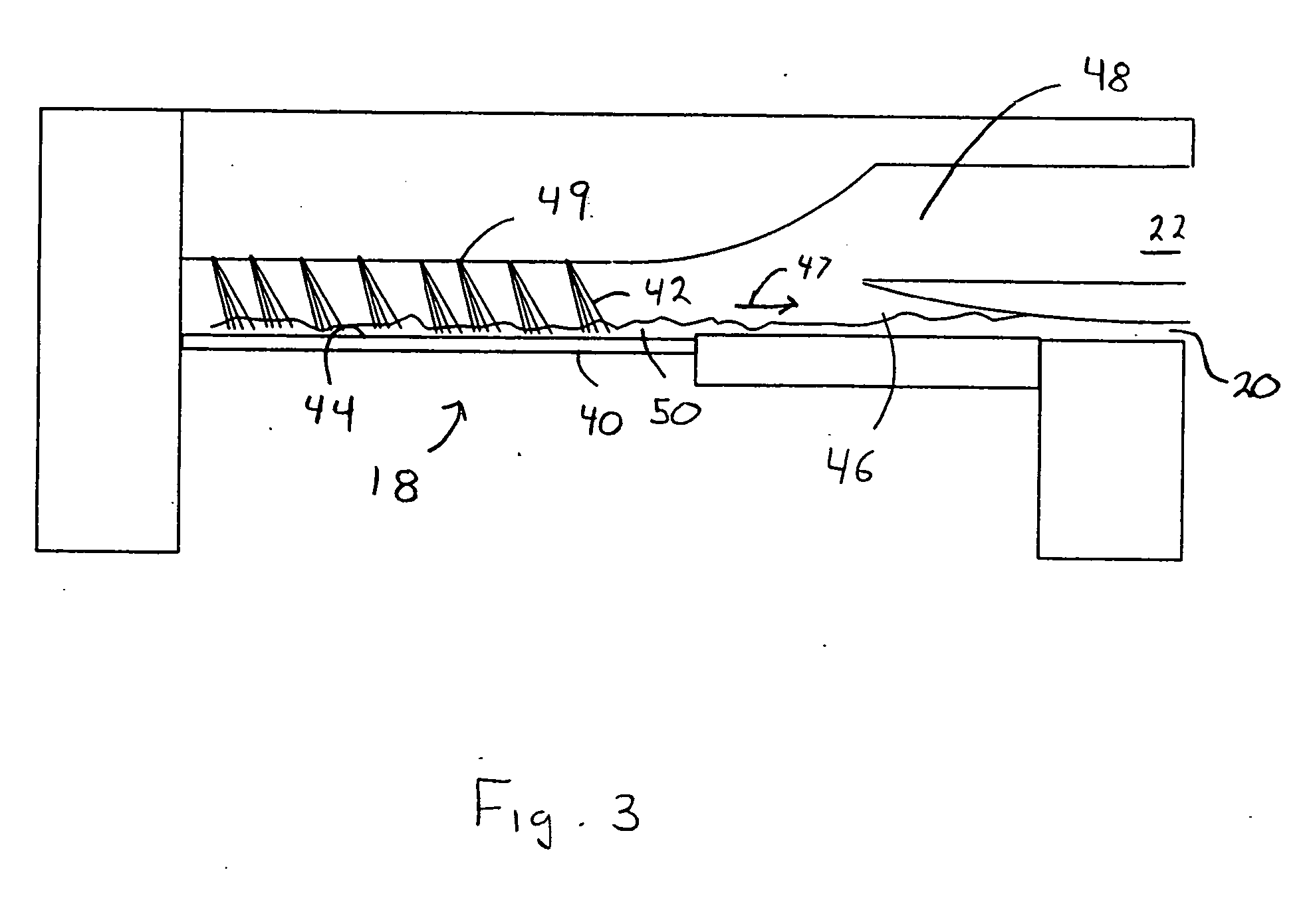Multi-mode fluid cooling system and method
a fluid cooling and multi-mode technology, applied in the direction of cooling/ventilation/heating modification, semiconductor/solid-state device details, semiconductor devices, etc., can solve the problems of lower performance and higher wall temperature, and achieve high heat transport, high heat removal efficiency, and high heat removal efficiency
- Summary
- Abstract
- Description
- Claims
- Application Information
AI Technical Summary
Benefits of technology
Problems solved by technology
Method used
Image
Examples
Embodiment Construction
[0026] The present invention will be described in detail herein with reference to the use thereof for the cooling of electronic circuits and electronic devices, particularly microelectronic circuitry as employed in computer systems, such as high-speed, high-performance computer systems (supercomputers). However, it should be understood that the present invention also may be applied in other applications, such as in the biomedical industry and for the cooling of laser arrays and high powered weaponry, etc. Spray evaporative cooling in accordance with the present invention may be applied to cryogenic devices, as an aid to laser-assisted surgical procedures, etc. It should also be understood that various combinations of cooling fluids other than those described herein may be used in a multi-mode cooling system and method in accordance with the present invention.
[0027] Multi-mode fluid cooling in accordance with the present invention is provided by spraying a cooling fluid mixture onto...
PUM
| Property | Measurement | Unit |
|---|---|---|
| angle | aaaaa | aaaaa |
| angle | aaaaa | aaaaa |
| distance | aaaaa | aaaaa |
Abstract
Description
Claims
Application Information
 Login to View More
Login to View More - R&D
- Intellectual Property
- Life Sciences
- Materials
- Tech Scout
- Unparalleled Data Quality
- Higher Quality Content
- 60% Fewer Hallucinations
Browse by: Latest US Patents, China's latest patents, Technical Efficacy Thesaurus, Application Domain, Technology Topic, Popular Technical Reports.
© 2025 PatSnap. All rights reserved.Legal|Privacy policy|Modern Slavery Act Transparency Statement|Sitemap|About US| Contact US: help@patsnap.com



